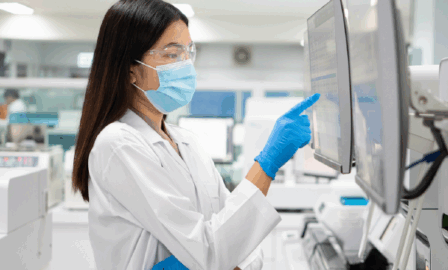Unraveling the COVID-19 Impacts to the Medical Device Market
The COVID-19 pandemic has emphasized the need for medical devices and protective equipment. Almost every business has been impacted by the pandemic, and as medical device manufacturers are finding themselves busier than ever, they are facing issues in their sourcing markets. In typical unprecedented health emergencies, the Strategic National Stockpile (SNS) has been the safety net. However, the program, created in response to 9/11, has suffered from low visibility, leaving the U.S. severely underprepared for a pandemic of this scale.
Increasing widespread public health issues, such as chronic diseases, the aging global population, the increasing geriatric population, the growing global demand for the life expectancy, and the booming demand for technological advances particularly in the medical device industries are all predicted to grow the industry past $104.3 million dollars by 2026.
The COVID-19 impacts to the medical device industry have redirected organizational priorities, placing a huge importance on responding to the ongoing crisis as opposed to other pressing unsolved health problems. The immediate influx of medical devices relevant to COVID-19 highlighted issues with outsourcing markets and product output. As the increased numbers of medical device outsourcing market companies attempted to compete, alternative business strategies and the push for innovative technologies became increasingly crucial to venture success. Though the COVID-19 cases have been steadily decreasing, there are still lessons to be learned and applied to future medical device supply chains.
COVID-19 Impacts to Medical Device Supply Chain
Personal Protective Equipment (PPE) and ventilators are two categories in medical device that experienced some of the most significant need throughout the pandemic. Because these devices were the most immediately necessary, they were the focus of many medical device and consumer products companies, with some making the switch to manufacturing these products to help alleviate production stresses. In order to manage the spread of novel coronavirus, health authorities across the globe focused efforts on testing which brought invitro diagnostics to the forefront as another critical area of medical device. And with the release of the COVID-19 vaccines, syringes are even more critically necessary.
Some companies have found great success from this unpredicted revenue stream, while others still are struggling to adapt; agility and adaptability are key to taking full advantage of this expansive opportunity for innovation.
Some of the sourcing issues with specific devices include:
PPE
The U.S. is the largest importer of face masks, eye protection, and medical gloves, creating a highly sensitive situation to disruptions in exports of medical supplies. These kinds of medical devices are used to protect the wearer from infection and exposure to disease. The goal of this kind of equipment is to ensure effective containment of the virus for all, not just the worker’s individual rights. The four main factors to the PPE shortage in the U.S. were a dysfunctional budgeting model in hospitals, a major demand shock, a federal government failure, and disruptions to the global supply chain.
Ventilators
Ventilators function as devices to mechanically control or aid in patient breathing by providing a constant flow of oxygen in breathing gas. Many medical and government institutions have recognized that the need for these medical devices and equipment have outpaced the available supply of these products and conservation measures have been put in place as a result.
Testing Equipment
Medical equipment used for testing saw a huge increase in demand over the pandemic. Diagnostic-test manufacturers are crucial to governmental COVID-19 measure, and invitro diagnostics is ideal for infectious disease diagnoses, causing a sharp increase in supply. Similar trends were seen in nasal swabs, which are important to COVID-19 rapid testing. According to Bloomberg, only two companies were producing nasal swabs. The U.S. based Puritan Medical Products increased the number of monthly swabs it produced from 20 million to 300 million. With the increase in demand for testing equipment, companies have shifted to increasing supply and experienced great success but should now be wary of the emergence of competition.
Syringes – Vaccines
The release of the COVID-19 vaccine has led to new needs. The New York Times reports that experts expect about 8 billion to 10 billion syringes will be needed for the COVID-19 vaccine alone. Many countries are struggling with syringe shortages. These shortages lead to a larger impact on vaccine distribution. Without the necessary needles and syringes, vaccines are going wasted. While companies are now ramping up production to fulfill orders of over a billion syringes, domestic production is not expected to improve until the second half of 2021.
Ways to eliminate this supply chain risk moving forward:
Diversifying manufacturing locations for medical devices and protective equipment will bring many benefits, as some of the largest pitfalls were a result of a very narrow supply channel.
Increasing transparency in the manufacturing and sourcing process by importers, exporters, and corporations is necessary to de-risking the already non resilient supply chain.
Remote Medical Devices and Consumer Interaction
With the onset of stay-at-home orders and social distancing back in March of 2020, the past year forced consumers to find new ways to substitute daily routines and other necessary tasks. A greater push for elders to age at home and to treat and monitor medical conditions remotely, have caused both medical device companies and consumer product tech companies to develop new devices that aid in these areas.
The COVID-19 pandemic has transformed desire into need. Home treatment is no longer a choice for the large population of vulnerable patients. Large consumer product companies such as Apple have been implementing various health features such as ECG and heart monitors to aid in safety for consumers.
Medical providers and other medical services are under increased pressure to remain prepared for possible COVID-19 outcomes; as a result, it’s inevitable that medical device companies will face difficulties. In order to help compensate for these outages, a team of volunteers came together to create the Medical Device Online Database. The database was created to aid medical providers with methods and resources to keep various medical devices in good working condition.
The database was posted to iFixit and provided an indexed compilation of resources that could be used to keep mission-critical devices related to COVID-19 working. Despite the good intentions of the volunteers, the medical device company, Steris, argued that on grounds of copyright, their product’s information should be taken down. iFixit responded by arguing that the Digital Millennium Copyright Act protects the information, as it is making fair use of the materials. These arguments have more than just legal implications. They also bring up many questions relating to safety and maintenance standards in the medical device industry. In the future, companies must be aware of how their devices are being maintained, who is qualified to make repairs, what is the risk of improperly repaired equipment, which are just a few of the open questions that need to be answered.
Looking Ahead
Both “front and center” products, such as those used by hospitals and other medical providers, and telehealth devices for those looking to supplement, maintain, or track health changes and concerns at home, have been impacted by supply chain issues due to increased demand.
As traditional and emergency services became overwhelmed, the shift towards telehealth and other at-home medical devices provided the opportunity to prove themselves worthy as traditional and standardized forms of healthcare services.
Long term impacts of the COVID-19 pandemic include Original Equipment Manufacturers (OEMs) looking to reevaluate their suppliers and consider which suppliers can survive and remain stable during world health crises. Medical device companies will consider alternate suppliers and restructure their manufacturing capabilities to account for unforeseen circumstances.
Subscribe to Clarkston's Insights
Coauthor and contributions by Maggie Wong



